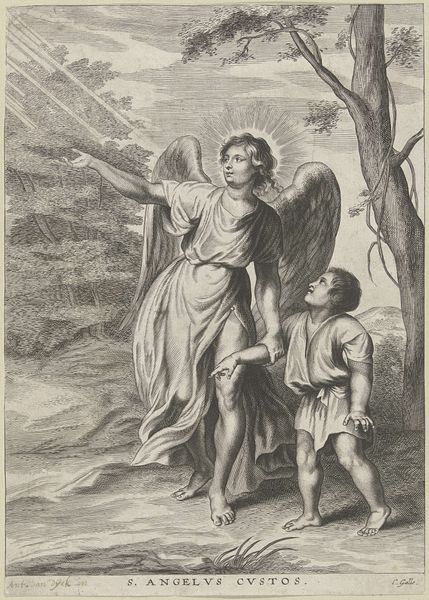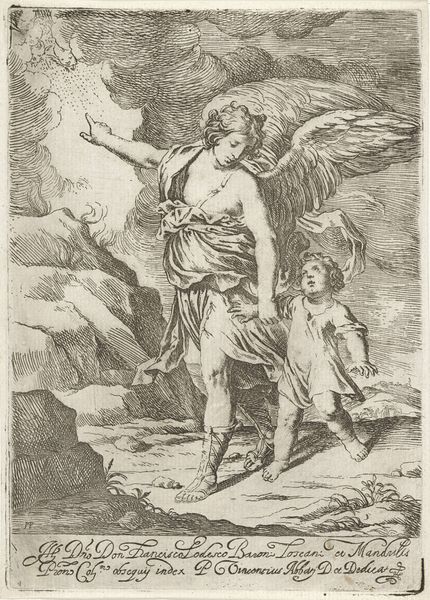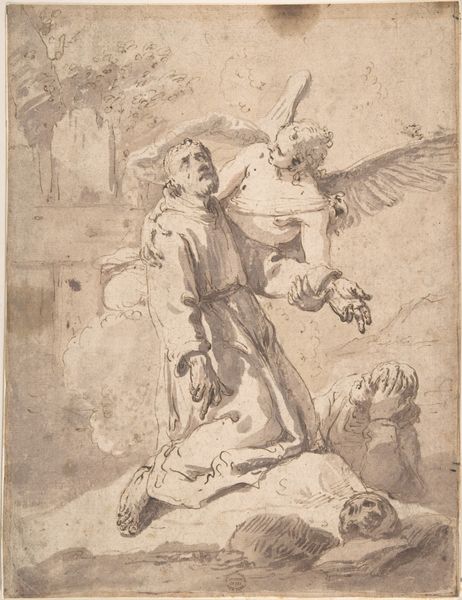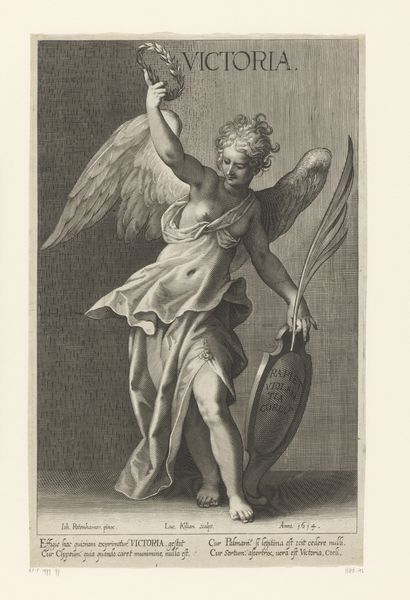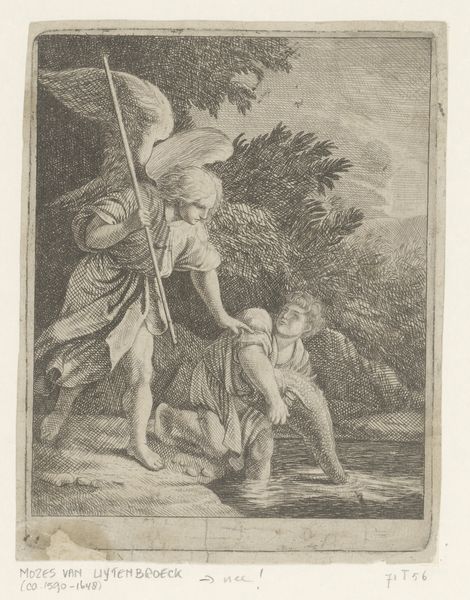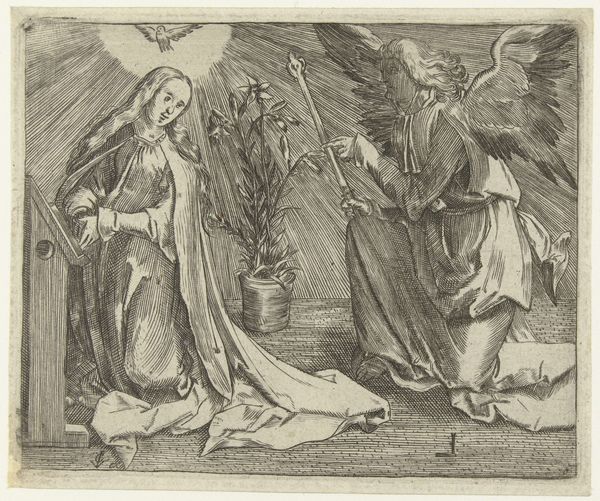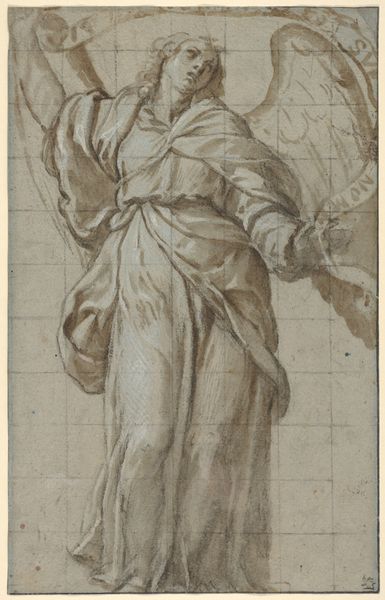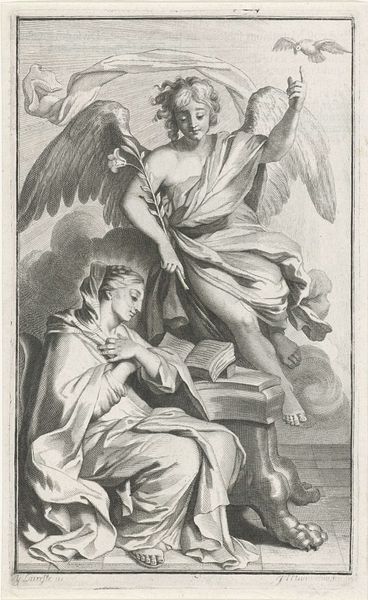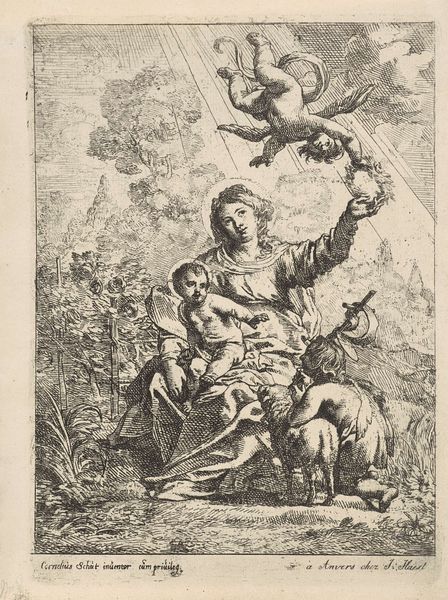
painting, oil-paint
#
portrait
#
allegory
#
baroque
#
painting
#
oil-paint
#
figuration
#
oil painting
#
chiaroscuro
#
history-painting
Copyright: Public Domain: Artvee
Curator: Murillo's "Archangel Raphael," rendered in oil paint, presents us with an intriguing allegorical scene. What’s your immediate reaction? Editor: The chiaroscuro immediately grabs me; it's like a study in contrasts. The softness of Raphael's features against the implied harshness of his journey—his feet are rough, and he is in the middle of nowhere, carrying what looks like a fish. Curator: Indeed. Murillo, a key figure of the Baroque era in Spain, often engaged with religious and allegorical themes. Raphael, holding a staff, seems poised between earthly realm and divine purpose. Looking at it from a contemporary intersectional narrative, how does the depiction of power dynamics play out here? Who gets to claim divine authority? Editor: From a formalist perspective, I'm interested in how Murillo uses color to delineate the angel's figure. The golden yellow of the robes catches the light, creating a sense of three-dimensionality, almost detaching him from the vague background that lacks definition. And then there’s the staff that visually repeats the shape of the body. It creates harmony and rhythm. Curator: Agreed. One also has to consider the context of Murillo's Seville—a city grappling with social inequalities. Depictions like this would circulate among the elites. And to examine his Raphael through feminist theory; one must deconstruct traditional portrayals of masculine divinity by examining if they are present in the artwork. Does he exemplify tenderness and guardianship over patriarchal dominion? Editor: From a semiotic viewpoint, the fish functions as a signifier. In Christian iconography, a fish often represents Christ himself. Is Raphael holding and protecting Christ? Is he holding the salvation for all of humanity? It certainly adds another layer to the composition. Curator: That is exactly my point, all layers contribute and converge. Murillo positions his figures within a specific ideological framework—challenging us to interpret representations of spirituality through shifting socio-political and cultural lenses. Editor: It’s the painting's construction; color, shape, and symbols work together to construct an understanding beyond surface interpretation. It is hard to dismiss. Curator: So it is; looking at the painting from a historical, sociological, and cultural angle offers so many insights and brings forth interesting discussions and challenges regarding representation, spirituality, and social norms in baroque era. Editor: And I will always appreciate art for its construction!
Comments
No comments
Be the first to comment and join the conversation on the ultimate creative platform.
